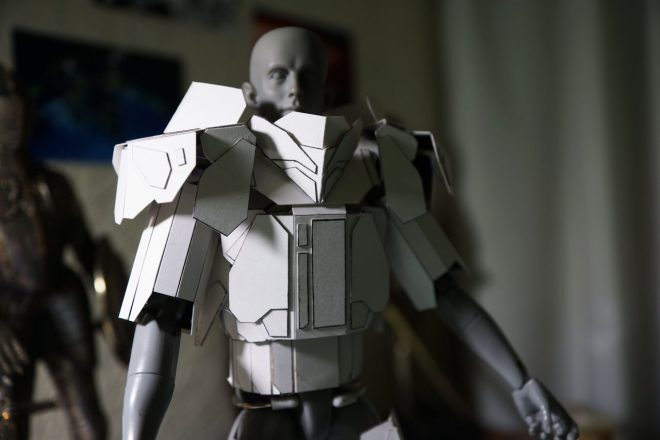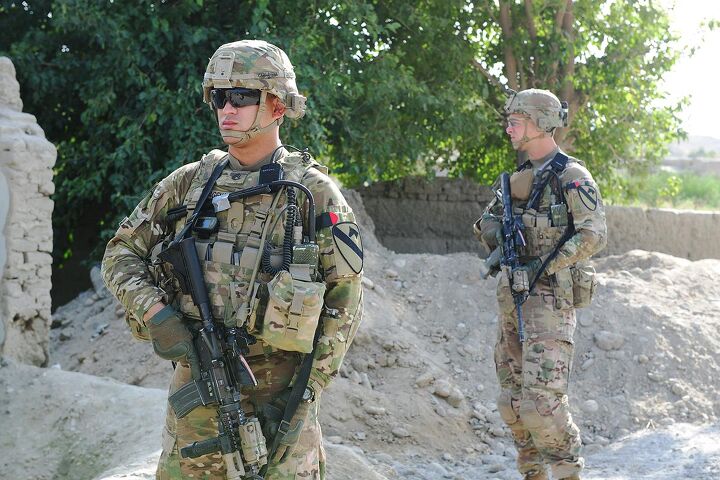The Army looks set to turn the page on ceramic and Kevlar based armor systems of the past with a revolutionary new armour system. The US Army has signaled its decision to move away from its standard Improved Outer Tactical Vest (IOTV) body armour and adopt a new more cost-effective carbon-based system. Relying on carbon and cellulose the new armour is at the cutting edge of ballistic technology.
The US Army currently uses the Improved Outer Tactical Vest (IOTV) which was introduced back in 2007. While IOTV can withstand an impact from both a 7.62×39 or 7.62×51 round, it weighs in at 33.6 pounds (15.2 kg), which the Army now claims can be significantly reduced by what it has designated Carbon Reactive Protection or CRP.

Soldiers laugh as they discard their old IOTV (US Army)
The new CRP comes from the engineers and scientists at U.S. Army Research Laboratory in Adelphi, Maryland. The Army is extremely enthusiastic about the new technology with senior staff praising the ingenuity behind the new system. Army Chief of Staff General Mark Milley describing it as “the single best technological development from ARL this month.”
Following the publication of a video by TFBTV back in March US Army’s PEO Soldier, the agency responsible for the Army’s rapid development and procurement of equipment, recognised the protective advantages of paper and announced the development of the M8514A4 CRP armour system. TFB takes great pride in our role in bringing CRP to fruition. Following James Reeves’ TFBTV video ‘”Assault Rifle” vs. The Common Backpack’ the Armament Research, Development, and Engineering Center (ARDEC) began working with ARL to explore the feasibility of paper-based armour.
One of ARL’s leading engineers Greg Carter discussed how TFBTV’s video inspired the Army’s central, laboratory to explore the ideas behind CRP: “We’ve been focused almost entirely on our very promising Third Arm project, so when we saw that video, of the guy in those short shorts, it really spurred us into action to get our CRP together.”
Carter explained that during development “we quickly realised we couldn’t afford to keep using college textbooks, it was just too expensive.” Information on the new armour is naturally closely guarded but the Army was willing to confirm that the new armour is around two thirds the weight of IOTV and about six fifths the price. “The protection to weight ratios with a carbon system just make a lot of sense,” Gen. Milley explained, “lighter weight, greater mobility and increased overmatch for our warfighters.”

A photo released by ARL showing a concept design prepared by one of the Army’s industry partners showing how the CRP will look when fully developed (Dunder Mifflin/US Army)
The Army is looking to begin fielding the CRP system with operational troops by the last quarter of 2018, with PEO Soldier about to publish an RFP calling on the pulp and paper industry for their expertise. The USMC has signaled their interest in a waxed variant of CRP currently in development at NSWC Crane.
You can read the US Army’s full statement regarding the release of Carbon Reactive Protection here.
 Your Privacy Choices
Your Privacy Choices
